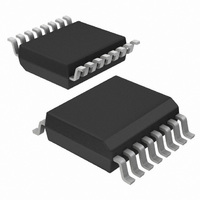NE1619DS,112 NXP Semiconductors, NE1619DS,112 Datasheet - Page 16

NE1619DS,112
Manufacturer Part Number
NE1619DS,112
Description
IC TEMP MONITOR 16SSOP
Manufacturer
NXP Semiconductors
Datasheet
1.NE1619DS112.pdf
(19 pages)
Specifications of NE1619DS,112
Function
Temp Monitoring System (Sensor)
Topology
ADC, Multiplexer, Register Bank
Sensor Type
External & Internal
Sensing Temperature
0°C ~ 125°C, External Sensor
Output Type
SMBus™
Output Alarm
Yes
Output Fan
No
Voltage - Supply
2.8 V ~ 5.5 V
Operating Temperature
0°C ~ 125°C
Mounting Type
Surface Mount
Package / Case
16-SSOP
Lead Free Status / RoHS Status
Lead free / RoHS Compliant
Other names
568-4228-5
935264532112
NE1619DS
NE1619DS
935264532112
NE1619DS
NE1619DS
Philips Semiconductors
Printed Circuit Board layout considerations
Care must be taken in PCB layout to minimize noise induced at the
remote temperature sensor inputs, especially in extremely noisy
environments, such as a computer motherboard. Noise induced in
the traces running between the device sensor inputs and the remote
diode can cause temperature conversion errors. Typical sensor
signal levels to the NE1619 is a few microvolts. The following
guidelines are recommended:
1. Place the NE1619 as close as possible to the remote sensor. It
2. Route the D+ and D– lines parallel and close together with
3. Leakage currents due to PC board contamination must be
4. Use wide traces to reduce inductance and noise pickup. Narrow
2004 Oct 05
HECETA4 Temperature and voltage monitor
can be from 4 to 8 inches, as long as the worst noise sources
such as clock generator, data and address buses, CRTs are
avoided.
ground guards enclosing them (see Figure 14).
considered. Error can be introduced by these leakage currents.
traces more readily pickup noise. The minimum width of 10 mil
and space of 10 mil are recommended.
GND
GND
D+
D–
Figure 14. PCB layout for D+ and D–
SL01218
16
5. Place a bypass capacitor of 100 nF close to the V
6. If the remote sensor is operating in a noisy environment and
REMOTE
SENSOR
input filter capacitor of 2200 pF close to the D+ and D– pins.
located several feet away from the NE1619, a shielded twisted
pair cable is recommended. Make sure the shield of the cable is
connected to the NE1619 ground pin, and leave the shield at the
remote end unconnected. Shield connecting to ground of both
ends could create a ground loop (refer to Figure 15) and defeat
the purpose of the shielded cable. Also, cold soldered joints and
damaged cable could introduce series resistance and reslult in
measurement error. For instance, a 1
a change of temperature of about 0.5 C.
Figure 15. Using shielded twisted pair
SHIELDED TWISTED PAIR
resistance can introduce
Product data sheet
D+
D–
NE1619
NE1619
DD
GND
pin and an
SL02156














